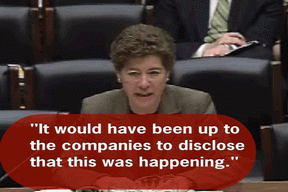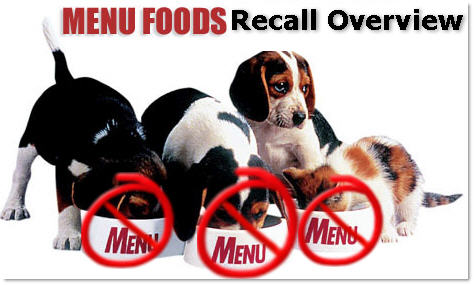Calling Scientists and Mathamticians! Use your Skills! Help Save Lives!
DMS in comments makes the stunningly clear comment that I was going to make:
I think we need to keep in mind that the FDA/USDA released all of the chickens, eggs and Pigs for processing and sale before they even had their assessment peer-reviewed. Where else, but in the American government, would that happen?
Comment by DMS — June 13, 2007 @ 10:36 pm
This is at the heart of the issue. Big Chicken and Big Pig wanted a reason they could use to get the USDA to release their chicken and hogs into the human food supply. They got it. And it's not even really a test. It's a RISK ASSESSMENT. They are creating probabilities based on assumptions in lieu of hard data. And guess what? There were no mathematicians on the peer review list. Surprised? I'm not.
Calling Superstar Mathamtician, John Allen Paulos. Also known as:"Mathamtician to the Media" For my money, Paulos is the best explainer of math and stats in the business.
John Allen Paulos to the Blue Spocko Courtesy phone. John Allen Paulos to the Blue Spocko Courtesy phone.
3.5 million chickens went out because someone took recalled pet food known to kill animals and fed it to chickens. Maybe that food could be excused, it was the first batch that went to humans.
(BTW, somewhere out there a odd lots person(s) who said, "Hey, I can pick up this food for pennies and sell it for dimes. Why is it so cheap? Who cares!" Hey buddy that "food" killed thousands of pets and tens of thousands more, and now you are going to feed it to the animals I eat? Thanks a lot, jerk.)
I want some OTHER scientists to look at this and speak plainly about this (and about your peer's peer review if you don't mind.) I know that some of you have less at stake than getting the call from the FDA to do more paid (?) peer reviews, so maybe you can be a bit more... blunt. After all, it's your life this time, not just some pets.
And speaking of mathematicians like John Allen Paulos, (who is one of my favorite writers on math, the media and humor) Listen to explodinghed, another commenter at Pet Connection.
risk assessment is simply a way of appearing to make responsible decisions without actually doing that. it’s been going on in business for a very long time. this peer review was less of a whitewash than i expected it to be, but i’m not surprised that they reached the conclusion that fda’s actions were “reasonable”. i’m sure that everyone involved knew what their assignment was.
note that there are no PhD level mathematicians on this panel. not for nothing, but in more than a decade of working on biological research projects and water analysis projects, i was rather shocked to realize that in general, the scientists with whom i worked were almost uniformly terrible mathemeticians, and in many cases not even good scientists.
[snip]
Comment by explodinghed — June 14, 2007 @ 5:13 am
(btw, I'm not going to fault him or her for their spelling and capitalization, this is not a peer reviewed blog...)
So if you want to check out the risk assessment on the contaminants that that went into 23.5 million chickens and 56,000 hogs read it here. (Link)
If you then want to comment go here:
Docket: 2007N-0208 - Draft Melamine and Analogues Safety/Risk Assessment; Availabiity [sic] (link to comment form)
Finally, here is the big thing to remember. If this food is NOT safe to eat, you Can NOT avoid it even if you want to. Why? Because the FDA/USDA will NOT tell you who put these 23.5 million chickens into your food supply.
What would have happened if the peer review panel said: "This is a TERRIBLE risk assessment. This should NOT be used to justify sending 20 million chickens and 56,000 hogs into our food supply."?
Nothing. Why? Because the chicken has flown the coup. The hogs are now your bacon.
So now that the risk assessment peer review has declared it "reasonable" (by some hand picked scientists ) can they tell us the names of the chicken farms that sold the chicken to us? Why not?
What is their fear? Don't they trust their scientists? Don't they think that they are reasonable?
If they don't tell us the names of the farms and tell us WHERE the food went then we know that they don't believe their own data. But they are willing to make us the guinea pigs because their first and foremost purpose is not as stated:
FDA's Former Mission StatementThe FDA is responsible for protecting the public health by assuring the safety, efficacy, and security of human and veterinary drugs, biological products, medical devices, our nation’s food supply, cosmetics, and products that emit radiation. The FDA is also responsible for advancing the public health by helping to speed innovations that make medicines and foods more effective, safer, and more affordable; and helping the public get the accurate, science-based information they need to use medicines and foods to improve their health.
The New FDA Mission Statement?
The FDA is responsible for protecting thepublic healthprofits of corporations by assuring the safety of their food. The FDA provides the public information that the corporations deem useful for consumers to consume the foods that are being sold to them.
Labels: FDA, itchmo, melamine in human food supply, petconnection, recall, spocko, tainted pet food








I'd like to see your source on that 3000+ dead pets, the most I've seen on "reputable" websites is ~250, that's a whole order of magnitude off from your numbers. I think the companies should come clean, but I also don't think anyone should be inflating numbers just to get a response.